Sport, a tool for peace?
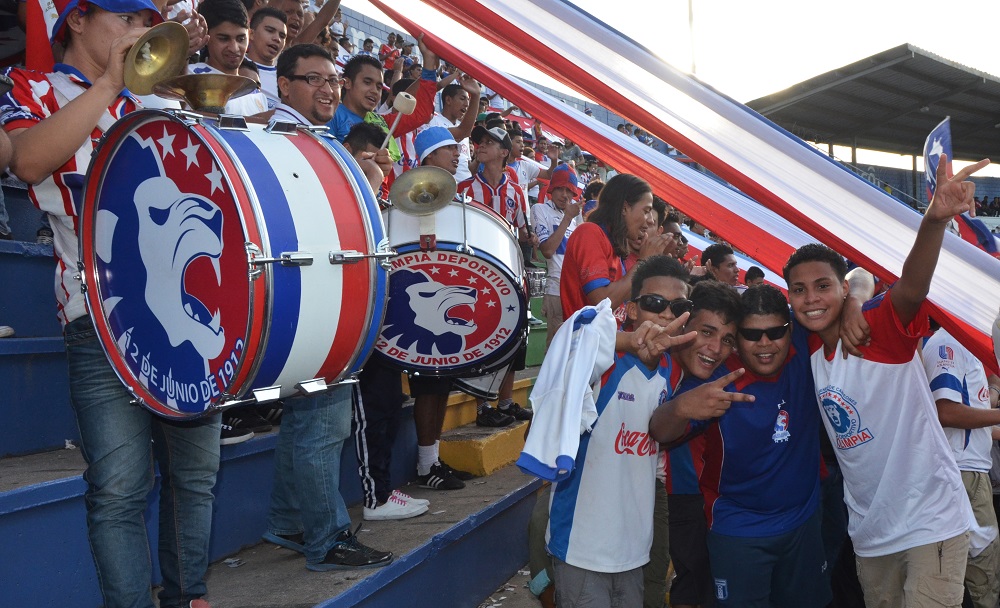
Sport is not limited to the practice of physical activities. It is in fact, a recreational space where a healthy lifestyle is promoted, through physical and mental development. It is a place where individuals converge to improve their social skills, strengthen cultural values and adapt to rules.
For this reason, the General Assembly of the United Nations has established April 6, as the International Day of Sport for Development and Peace, with the aim of recognizing the contribution of sport to the realization of peace through the promotion of tolerance and respect. As the eight Secretary-General Ban Ki-moon stated: “Sport promotes health and well-being. It fosters tolerance, mutual understanding and peace. ... It empowers, inspires and unites.”
Nonetheless, the massive appeal of sport makes it a social phenomenon, where the context in which it’s developed determines the behaviors and actions of its followers, in particular when it involves youth. In this sense, social context greatly defines whether a sporting spectacle actually contributes to peace or incites violence.
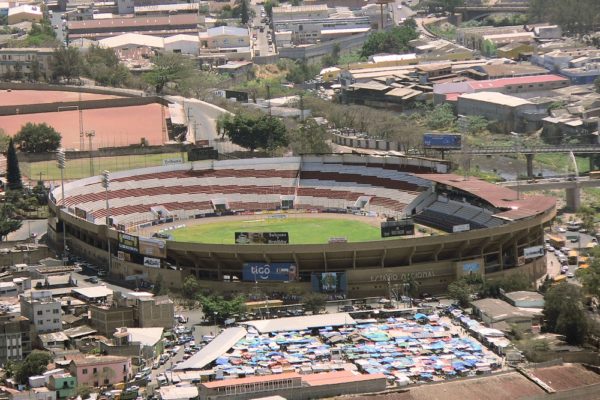
National Stadium Carias Andino in Honduras. Licensed CC BY-SA 3.0
Football, a global phenomenon
Football (soccer) is the sport that attracts the greatest number of people around the world, practiced in over 270 countries. Its massive appeal, goes beyond the likes of football fans and players, it also involves large private investments, political interests, and a complex network of relations between different levels of society. Therefore, football is not strictly limited to the field, but is actually a social phenomenon. In any case, the place that football holds and the impact it produces depends on the general social context.
Around the world, football fans organize themselves into fan clubs (known as barras in Latin America), that aim to follow and encourage their team. These barras are a meeting place for followers, where not only do they share their preference for a particular football team, they also find identity and fraternity. These feelings however, taken to the extreme, can make passion, euphoria and unconditionality become vandalism.
Vandalism related to football has been a recurring phenomenon around the world. For example, in Europe, since 1960 the first manifestations of vandalism began amongst the followers of football teams in countries like England, Italy, the Netherlands, Germany and Spain. Other countries in Latin America, such as Argentina, Mexico, Colombia, Honduras and El Salvador, also experienced these violent expressions around football.
However, violence related to football can start and end in the physical space of the stadium, in societies where institutional and social mechanisms are capable of reducing the risk factors that favor violence. But in societies where these mechanisms do not exist, the violence that emerges from the natural rivalry between the followers of two football teams, can transcend the limits of the stadium and become a social problem.
This is the case of Honduras, one of the poorest countries in Latin America and, at the same time, one of the most violent in the world according to the number of homicides registered annually. The permanent weakness of the Honduran public institutions is the result of a historical indifference from its economic and political elites to develop a State that guarantees favorable social development, democracy and economic growth. All Honduran society is immersed in these problems and must coexist with it, but undoubtedly, the young people are amongst the main victims.
In this context of institutional fragility, inequality, high poverty rates, corruption and impunity, football stands as a beacon of hope that awakens the illusion of Honduran society. For them, football represents a 90-minute pause of happiness amid decades of anomie.
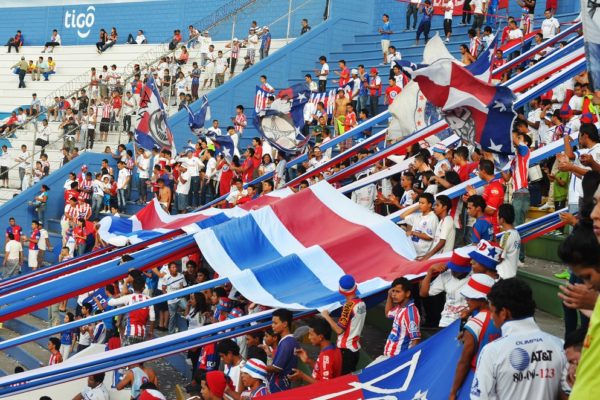
Football followers at Honduran stadium. Photo credit: OsArGarMor
Barras in Honduras
Barras in Honduras are groups made up of young followers of a local football teams that have transitioned from a natural rivalry between their teams to violent confrontations in the streets. The violence amongst these barras has evolved from fighting in the stadium to open armed confrontations in their communities. In addition, the very characteristics of their social context and the levels of organization they have acquired, has led them to assume social protection roles of their members. Amongst the most popular barras, we can name: the “Ultra Fiel”, of the Olimpia team; the “Revolucionarios”, of the Club Motagua team; the “Mega Barra”, of the Club Real España team and the “Furia Verde”, of the Club Maratón team. Being a member of these barras in Honduras is a matter of identity, a way of life and a search for spaces of cohesion that otherwise, are not possible to find.
In a context of marginalization and exclusion, youth groups (gangs, barras, rock groups or any other form of youth grouping) represent a mechanism of cohesion, identity and solidarity that is strengthened and radicalized due, on the one hand, to the excessive violence exercised by other forms of association and social integration (school and family) and on the other, to the repressive actions of State agents (police).
Barras are mostly made up of young people from poor and marginalized neighborhoods and communities where lack of basic public services, such as education, health and recreation, combine with high levels of unemployment and migration. These are social environments where violence is a structural part of social relationships, either at a intrafamilial and individual level, or as a strategy for income generation through illicit activities. This context is worsened by the effects produced by drug trafficking, as well as arms and human trafficking.
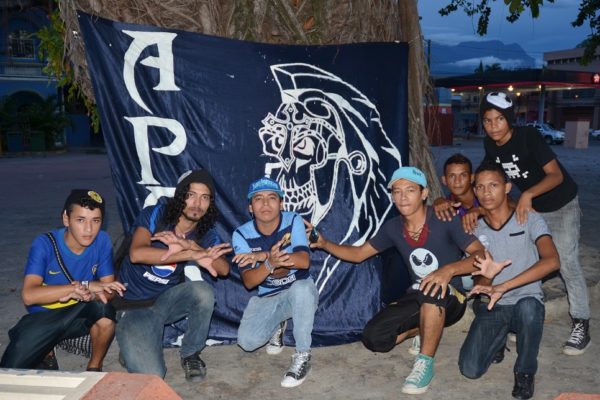
Members of the “Revolucionarios” supporting Club Motagua team in Honduras: Photo credit: Interpeace
Barras for peace
With the support of the Berghof Foundation in 2014, Interpeace implemented the project: “Sports clubs for peace”, which contributed to build a positive perception of the barras as relevant actors in building peace in Honduras. In order to reach this objective, Interpeace implemented training programmes on issues related to conflict transformation, peace culture and mediations with young members of the barras, so that these young participants could have the necessary tools to become agents of change in favor of non-violence and peace in the country.
In 2016, in partnership with Free Press Unlimited and digital newspapers: El Faro, Plaza Pública and Nómada, Interpeace began to implement the project: “Journalism, Youth and Sports for Peace”. In Honduras, media devotes much of their time and space to the dissemination of negative messages about the barras, which generates stigmatization towards the followers of the football teams: belonging to barras, in these contexts, is synonymous with criminality and violence. This produces higher levels of exclusion which, in turn, contributes to cycles of violence.
As a way to counteract this reality, the project aims to reduce the negative effects of stigmatization and criminalization suffered by the young members of the barras, in particular those derived from the information spread by the media and government institutions. The aim is that the participants themselves, from within the barras, influence Honduran society to change their general perception, reduce stigmatization and in turn, reduce violence rates.
The project provides training and technical support to the young members of the barras, so they can develop their own digital media, where they are producers and protagonists of new narratives that have a positive impact on the media, opinion leaders, politicians, civil society and the private sector. The aim is to establish channels of communication between the different levels of society to better understand the phenomenon of violence, its causes and contribute to the transformation of the perceptions that the public has about marginalized youth.
“When something bad happens, the media always say the barras are responsible, but they never tell the good things we do on a daily basis.”
“The credibility to tell a story is the main value that we must preserve to reduce stigmatization about barras.”
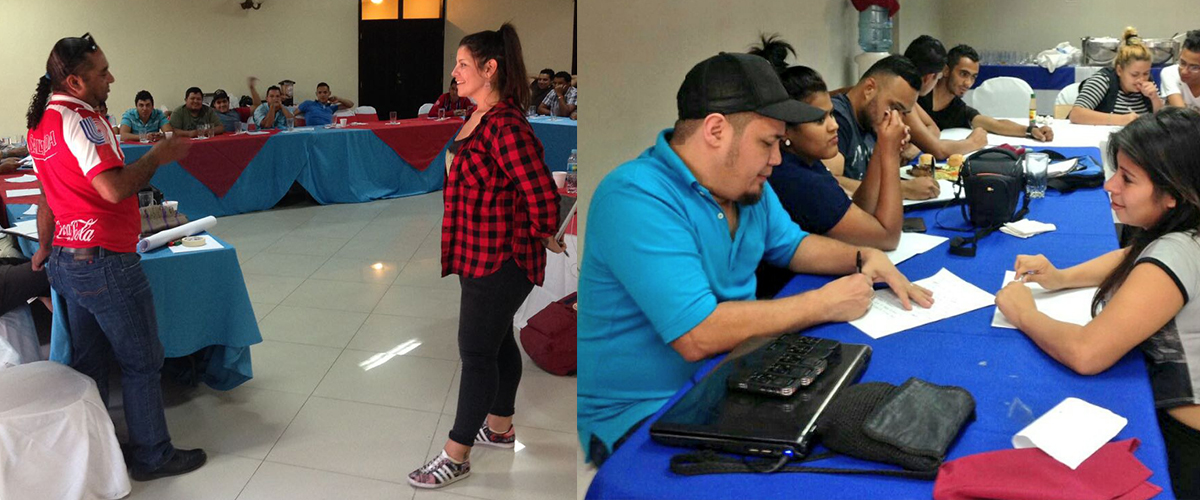
Journalism workshops in Honduras with members of barras "Ultra Fiel" (left) and "Revolucionarios" (right). Photo credit: Interpeace
According to the perceptions and experiences that the participants have transmitted, it is very important to recognize how necessary it is for young people to have a source of identity. In that sense, sport can be a source of inspiration for youth, bearer of positive values such as tolerance for differences, fellowship, teamwork, and their relationship with others, not as enemies, but as rivals in a recreational and peaceful space.
